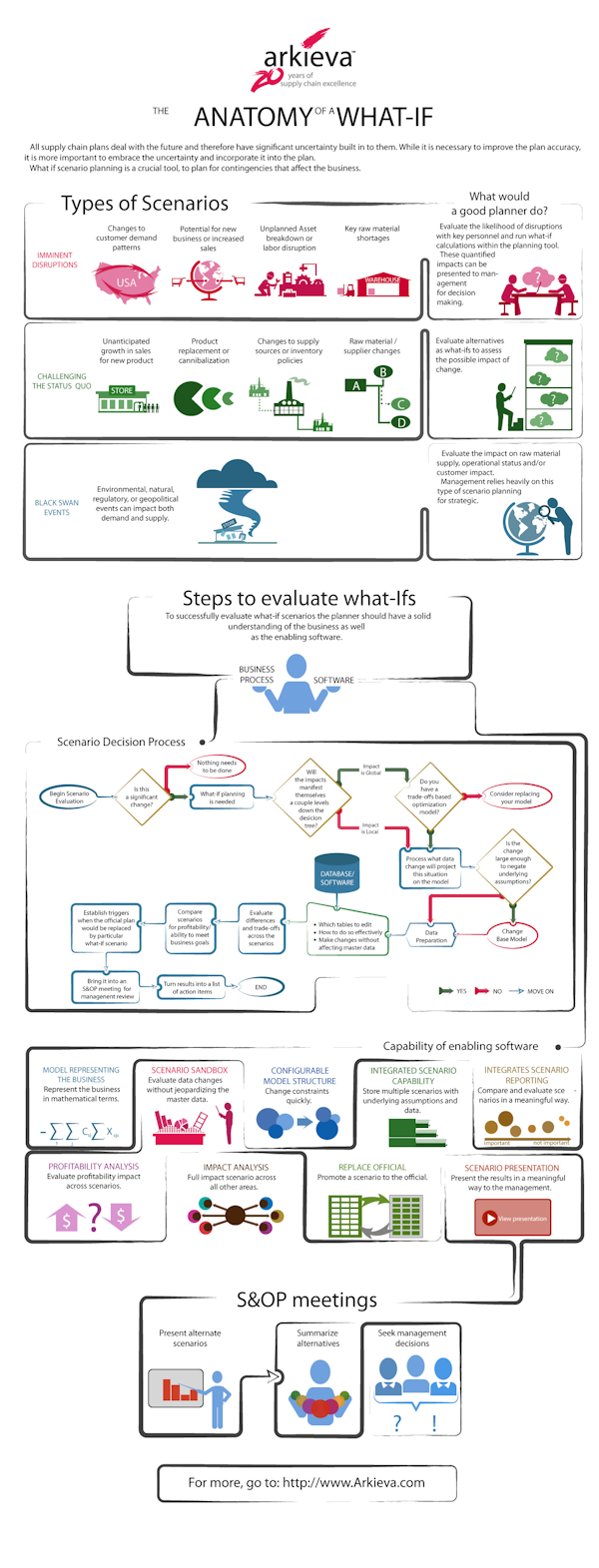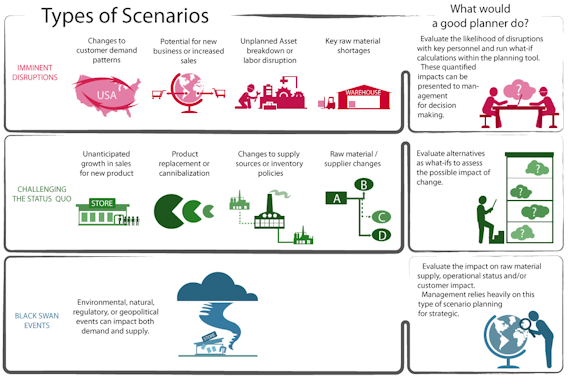“Risk isn’t a new topic in the supply chain,” writes Hailey Lynne McKeefry (@HaileyMcK), Editor in Chief of EBN, “but it’s one that is moving up the priority list for many electronics companies, as a global reach becomes a reality. Changing weather conditions, evolving labor disputes, and shifts in economic growth all make the risk picture change over time — requiring keen attention and careful planning.”[1] Supply chain risk is moving up the priority list in all commercial sectors, not just electronics. Accenture analysts note, however, that setting priorities and following through are two different activities. “New research from Accenture,” they write, “reveals that, while a vast majority of executives believe supply chain risk management is a priority, only a small group of companies employ practices that enable them to generate a significant risk management ROI.”[2] Actions speak louder than words when it comes to what companies believe are their real priorities.
Dr. Andreas Wieland (@scmresearcher), an Assistant Professor of Supply Chain Management at the Copenhagen Business School, points out that one reason supply chain risk management is moving up corporate priority lists is because supply chains are becoming more complex. He notes that recent management trends have resulted in “a concentration on core competencies and outsourcing of non-core activities [that] have created complex networks, i.e., global supply chains. … This increased complexity has also made companies more vulnerable.”[3] Wieland bolsters his argument by referring to a paper entitled, Structural Drivers of Upstream Supply Chain Complexity and the Frequency of Supply Chain Disruptions, co-authored by Christoph Bode and Stephan M. Wagner. In the paper, “the authors distinguish between three drivers of upstream supply chain complexity: (1) horizontal complexity (= the number of direct suppliers in a firm’s supply base), (2) vertical complexity (= the number of tiers in the supply chain), and (3) spatial complexity (= the geographical spread of the supply base). Based on survey data, the authors find that all three of these drivers increase the frequency of supply chain disruptions. It further found that these three variables even amplify each other’s effects in a synergistic fashion.” Those findings probably don’t come as a surprise to anyone involved in risk management.
“Managing risk in the supply chain can be a daunting task,” writes McKeefry in a subsequent article. “Supply chain managers increasingly realize that protecting their supply chains from serious and costly disruptions [is essential]. But often they don’t take action, because they are paralyzed by not really knowing how to start.”[4] McKeefry includes an infographic from Arkieva in her article to demonstrate some of the steps that risk managers need to take.

Although the infographic is excellent, it could lull one into thinking that supply risk management is a simple task. It’s not. An article in Supply Chain 247, notes, “With thousands of suppliers and sub-suppliers, it can be very time-consuming to find the weakest link in a supply chain.”[5] In a video that accompanied the article, Dr. Bruce Arntzen, Executive Director of MIT’s Supply Chain Management Program, explains how new technologies now permit risk managers to map supply chains much more quickly than in the past. Mapping supply chains from raw materials to finished goods is important, Arntzen notes, because “when inventories run too low at a supplier, a serious disruption — a storm, strike, natural disaster — can result in an interruption that lasts days and cost millions.”
Rich Becks (@richbecks), General Manager of Industry Value Chains at E2open, insists, “In today’s global economy, risk is unavoidable. But it also provides opportunity, as a company’s ability to adapt in difficult circumstances is a true source of competitive advantage and precisely defines a winning approach to risk responsiveness.”[6] Becks believes that a good supply chain risk management system should have these three qualities:
1. Multi-tier visibility. Successful programs function end-to-end. Having data visibility across your extended supply chain network at every tier enables early warnings about disruptions across the extended trading network. An early warning allows you to mitigate supply disruptions before operations and performance are negatively impacted. Enabling real-time visibility and alerts across multiple tiers requires the right technologies, expertise, and commitment from senior management. The right level of visibility lets companies and partners see information simultaneously, moving decision-making into the network.
2. Real-time collaboration. External collaboration helps manage the response when the unthinkable happens. Without collaborating outside the four walls of the enterprise, contingency plans are isolated from key suppliers and distributors, prolonging recovery efforts and disappointing customers. Real-time collaboration in the event of large-scale shutdowns or inventory losses enables companies to switch among alternate suppliers, and match short-term demands with order information. Knowing the options and acting immediately makes all the difference in market share as the industry recovers.
3. A flexible response plan. Supply chain disruptions cannot always be predicted, so evaluating potential outcomes well before they actually occur can make or break a response plan.
Supply chain risks are not going to diminish in the years ahead. As a result, risk management should continue to be a top priority for businesses, especially those whose supply chains are spread across the globe.
Footnotes
[1] Hailey Lynne McKeefry, “Changing World Requires Risk Management Focus,” EBN, 2 December 2014.
[2] Staff, “Don’t Play it Safe When it Comes to Supply Chain Risk Management,” Accenture Risk Management Megatrends Report, 2014.
[3] Andreas Wieland, “More Complexity = More Disruptions?” Supply Chain Management Research, 26 January 2015.
[4] Hailey Lynne McKeefry, “Supply Chain Risk Management Step by Step,” EBN, 5 December 2014.
[5] Sourcemap, “How MIT Visualizes Supply Chain Risk,” Supply Chain 247, 9 February 2015.
[6] Rich Becks, “Supply Chain Resilience: Turning Risk Into Opportunity,” Inbound Logistics, January 2015.





